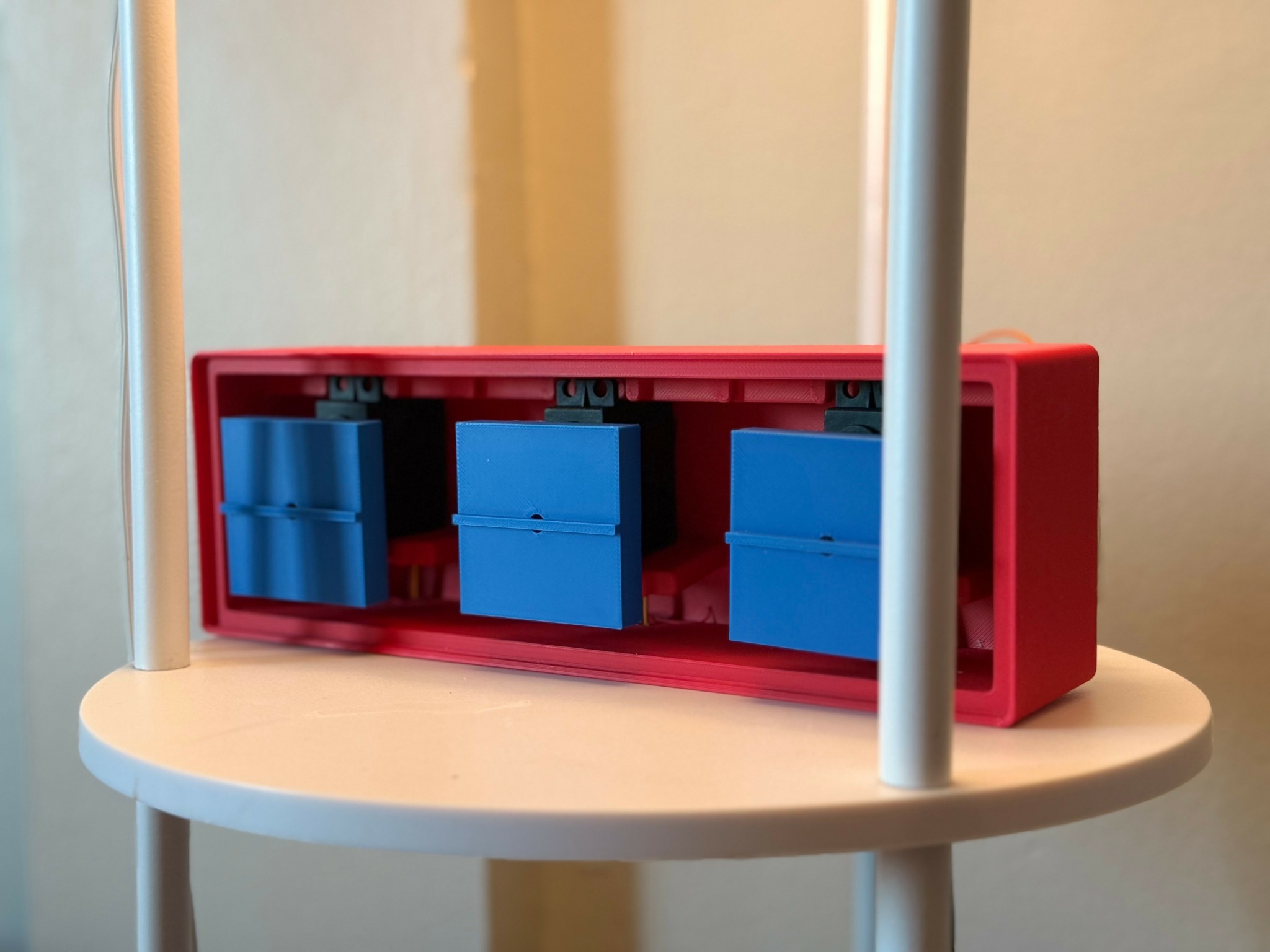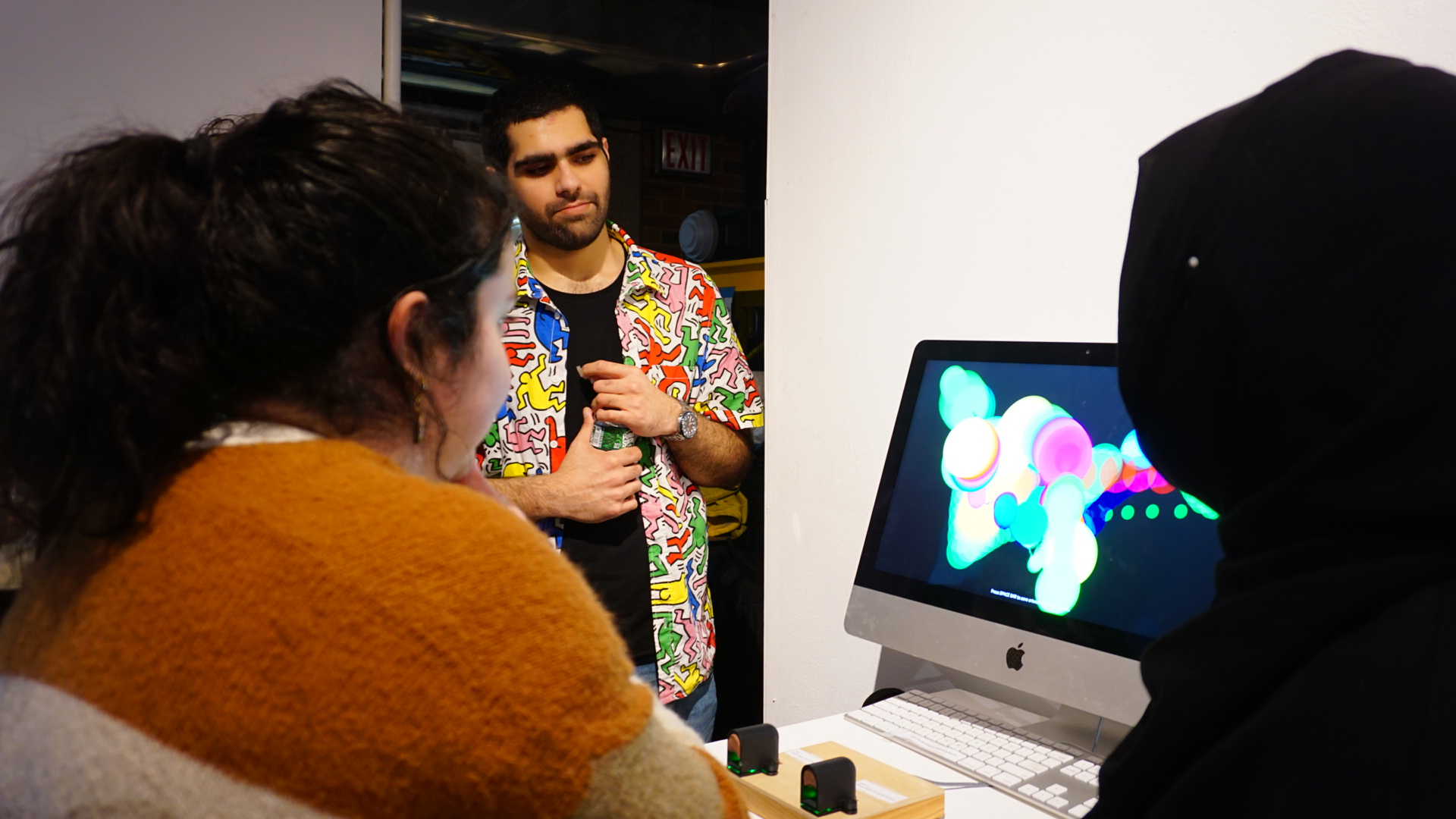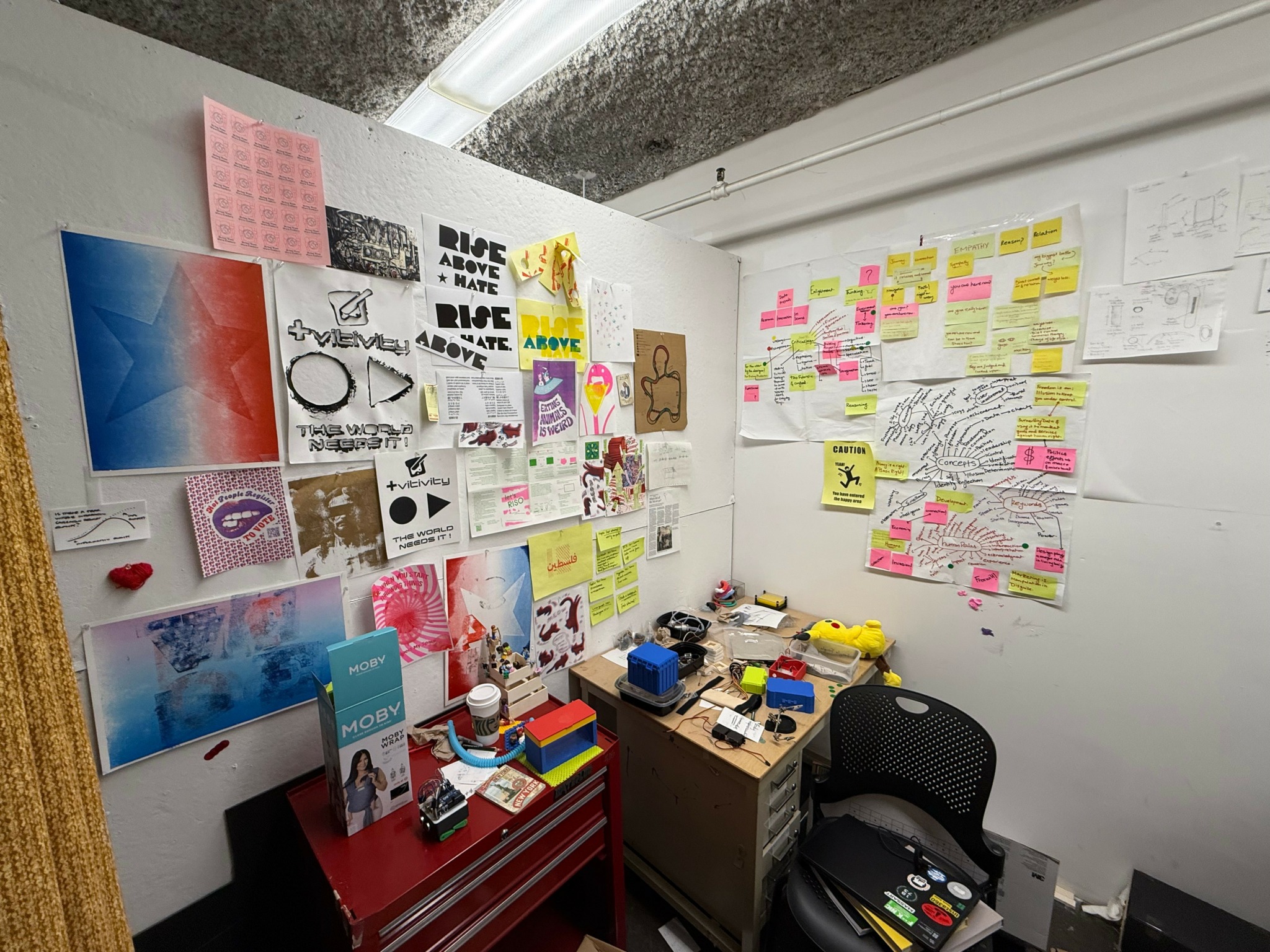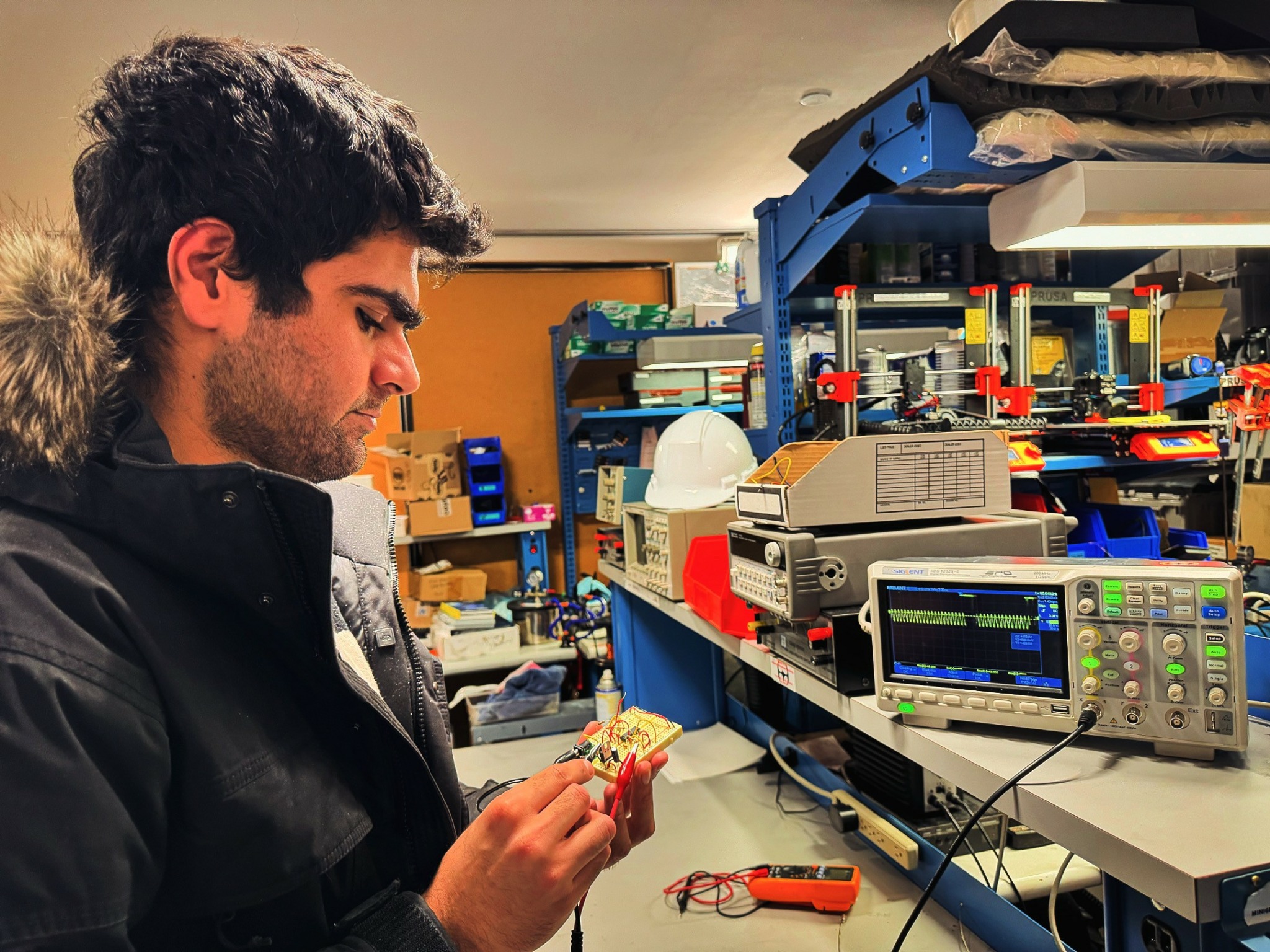We recently connected with Jawad Farooq and have shared our conversation below.
Jawad Farooq, thanks for taking the time to share your stories with us today Can you talk to us about a project that’s meant a lot to you?
One of the most profound and emotionally resonant projects I have undertaken is Digital Embodiment, conceived as the centerpiece of my MFA thesis, Tangible Tomorrow, at the Dynamic Media Institute at Massachusetts College of Art and Design. This body of work seeks to restore intimacy and emotional nuance to digital communication—reimagining how technology, design, and art can revive the warmth and subtlety lost in screen-mediated connection. At its heart, Digital Embodiment explores how multisensory, non-verbal cues—such as motion and scent—can bridge the void left by physical absence and nurture a deeper sense of presence across distances.
The impetus for this project emerged from a place of personal longing and emotional urgency. When I relocated to Boston to begin my graduate studies, I was forced to leave behind my wife and two-year-old daughter in Pakistan due to prolonged visa processing. One day, I was immersed in the daily intimacy of my family’s lives; the next, I found myself reduced to a digital shadow on a screen—present, yet painfully out of reach. That disorienting shift from shared presence to mediated absence was more than a logistical challenge—it was a profound emotional rupture. Digital Embodiment grew directly out of that experience; it is not merely a conceptual exploration of long-distance intimacy—it is a lived response to it.
At its core, Digital Embodiment is a poetic system for transmitting presence through motion and scent. It comprises two primary components: a wireless motion-tracking wristband worn by the remote individual, and a sculptural homing beacon that resides in the space of their loved ones. The wristband continuously transmits real-time motion data, which the beacon translates into physical gestures via three interlocking cubes that rotate, shift, and align in synchrony with the wearer’s natural movements—be it a wave, a walk, or the subtlest hand gesture. These motions become a quiet vocabulary of presence—one that is felt rather than spoken. At set intervals, the beacon also emits a familiar scent, uniquely associated with the wearer, through an integrated scent diffuser. This multisensory layering transforms absence into something tactile and atmospheric. It does not attempt to replicate the fullness of a person—but rather to echo their energy, their rhythm, their presence. It fills a space not with simulation, but with emotional resonance—offering comfort in the face of separation and a sense of nearness in the void of distance.
Tangible Tomorrow is available for reading on the following link: https://zenodo.org/records/15663997

Awesome – so before we get into the rest of our questions, can you briefly introduce yourself to our readers.
I am a multidisciplinary artist, designer, and entrepreneur, shaped by a life lived at the intersection of craft and imagination. My creative journey began not in a classroom, but in the heart of my family’s offset printing press, Printvision, in Lahore, Pakistan. As a child, I wandered its ink-scented halls, mesmerized by the rhythm of the machines and the quiet magic of watching blank paper transform into something rich with color, form, and meaning. That experience didn’t just introduce me to design—it imprinted on me a deep reverence for materiality, process, and transformation.
I was especially drawn to the design department, where I first encountered an Apple Macintosh II. While I initially played games on it like any kid would, what stayed with me was how effortlessly the designers translated their vision into something tactile and communicable. That early blend of digital tools and analog outcomes became a foundation for how I understood the power of design.
This curiosity eventually led me to pursue a Bachelor’s degree in Fine Arts, majoring in Visual Communication Design. My academic years were as much about exploration as they were about unlearning—challenging the instincts I’d developed in the press and reshaping them through contemporary design thinking. During this time, I continued working at Printvision, grounding theory in practice. After graduating, I formally joined the press full-time and went on to co-found Pinn.Media, a design-forward creative studio focused on branding, packaging, and marketing. It was born out of a desire to serve design-centric clients with depth and precision, and over time, we expanded internationally, serving clients in the UK and USA while remaining anchored in South Asian craft sensibilities.
My creative evolution didn’t stop there. I later moved to the U.S. to pursue my Master of Fine Arts at the Massachusetts College of Art and Design (MassArt), where I pushed my practice into new territory—combining interaction, sensory storytelling, and emerging technology to explore what it means to design for emotion, connection, and presence.
Today, my work is rooted in human-centered design and guided by an enduring fascination with interaction and play. I thrive at the edge of experimentation, often blending mediums, disciplines, and cultural contexts to create work that resonates on a visceral level. Whether it’s building brands, crafting multisensory experiences, or prototyping new ideas, I seek to design with intention, empathy, and curiosity.
If there’s one thing I’m proud of, it’s my ability to adapt, respond, and create across a spectrum of challenges. You could say I’m a Swiss knife in the creative world—agile, thoughtful, and endlessly curious. Above all, I believe design should not only solve problems but also spark emotion, create presence, and deepen human connection

What can society do to ensure an environment that’s helpful to artists and creatives?
I think one of the biggest shifts society needs to make is learning to support living, local artists—not just the ones who’ve already made it or the ones we celebrate after they’re gone. Historically, a lot of artists only get recognition posthumously, which is kind of tragic. Why wait to value someone’s voice when they’re creating, struggling, and contributing in the now?
Supporting artists shouldn’t just mean clapping from the sidelines—it should mean investing in real, everyday things that help them grow. That could be artist incubators where people have time and space to explore their ideas without worrying about rent. Or even mentorship programs where working artists help teach others—not just their craft, but how to navigate the messy parts of creative life, like contracts, pricing, or building a portfolio that actually gets noticed.
Honestly, one of the toughest things as an independent artist or designer is knowing how to price your work. No one really teaches you that. You can pour weeks into a piece, and then you’re stuck second-guessing its value. Selling your work, talking about money—it’s hard, and a lot of us skip that part or undersell ourselves because we just don’t know where to start.
So to really support a thriving creative ecosystem, we need more than just grants (though yes—more grants, please!). We also need workshops on creative entrepreneurship, more platforms that help artists sell and show their work, and systems that make it easier to connect with clients, collaborators, and communities. It’s about building a culture that doesn’t just appreciate creativity—it helps sustain it.

For you, what’s the most rewarding aspect of being a creative?
For me, the most rewarding part of being an artist is the ability to take something invisible—a feeling, a memory, a question—and turn it into something others can see, touch, or feel. It’s that moment when someone interacts with your work and says, “I’ve felt this too,” even if they’ve never met you. That kind of connection is rare, and when it happens through something you’ve created, it feels incredibly meaningful.
There’s also something deeply satisfying about the process itself—the making, the problem-solving, the quiet chaos of bringing an idea to life. As a creative, you’re constantly learning, unlearning, and reshaping how you see the world. That constant evolution, that chase of curiosity, is what keeps me going.
And honestly, I love the challenge. Every new project pushes me into unknown territory—new materials, new tools, new emotions. It keeps things alive. That’s the beauty of this path: it’s never predictable, but it’s always deeply human.
Contact Info:
- Website: Jnaikcreates.solutions
- Instagram: https://www.instagram.com/jnaikcreates.solutions?igsh=MTI1cTQyMHVuaTE0MQ%3D%3D&utm_source=qr
- Linkedin: https://www.linkedin.com/in/jawad-farooq-naik-0122a533?utm_source=share&utm_campaign=share_via&utm_content=profile&utm_medium=ios_app
- Other: Https://pinn.media
Https://printvision.com.pk




